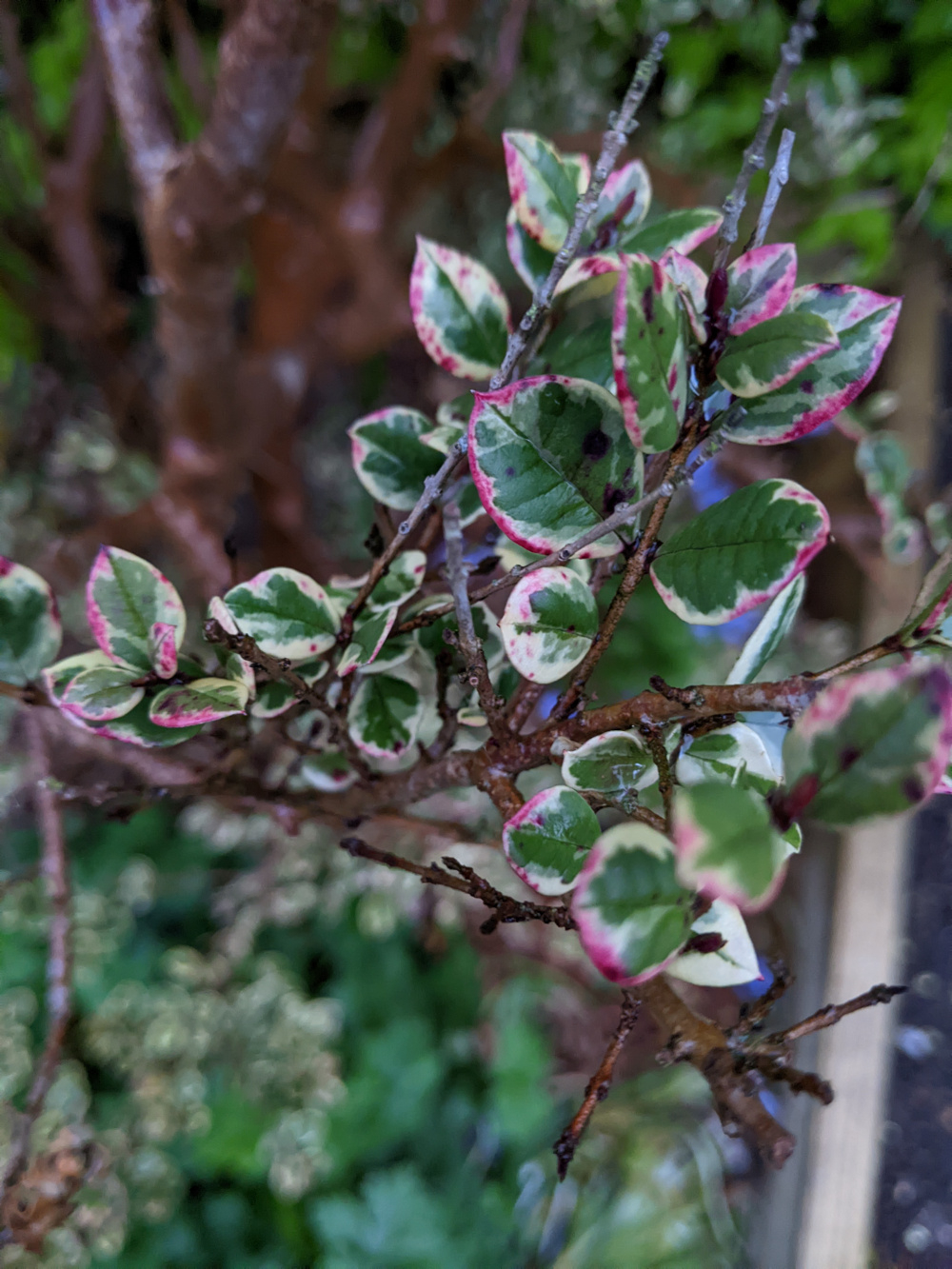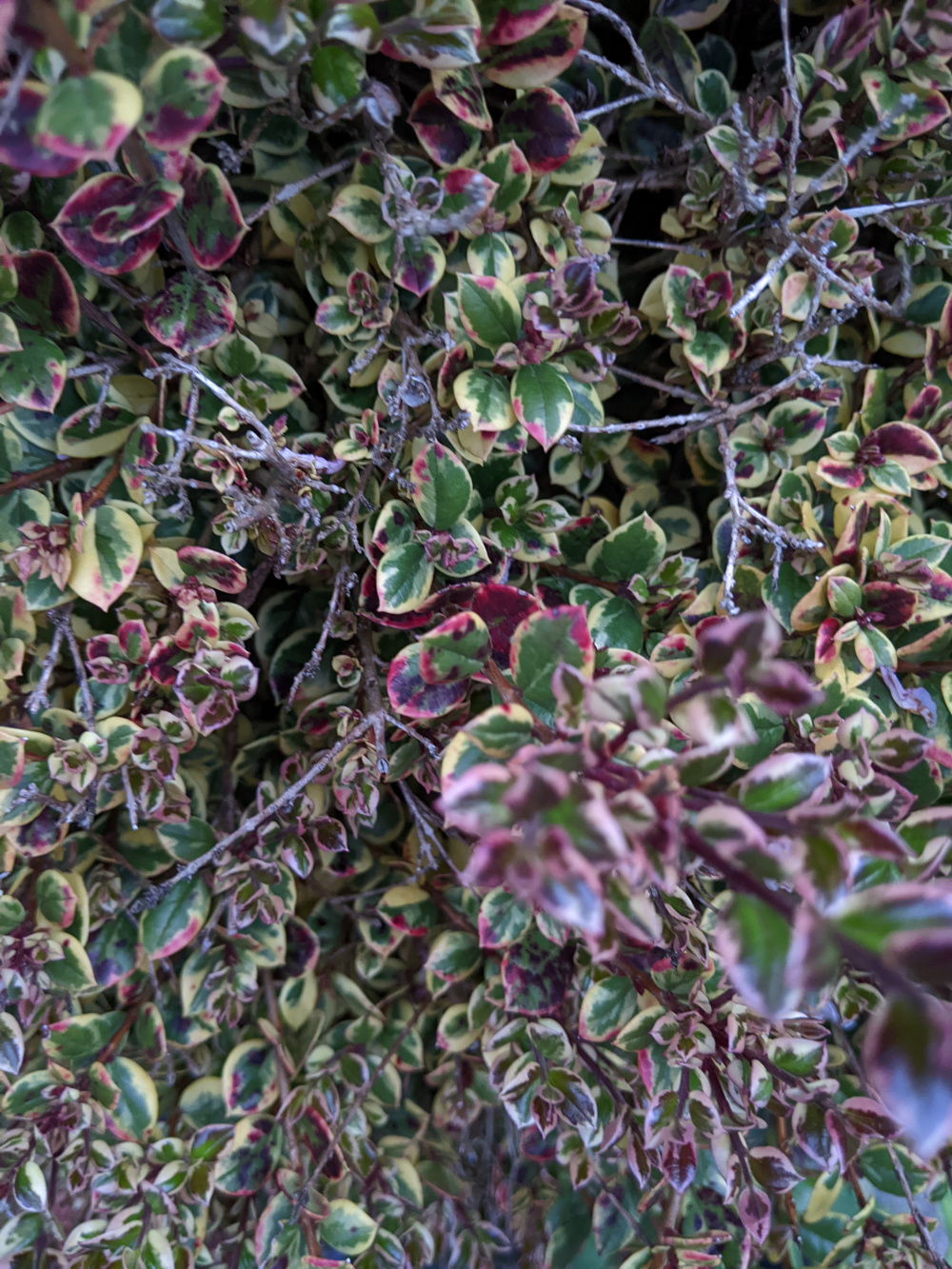This Forum will close on Wednesday 27 March, 2024. Please refer to the announcement on the Discussions page for further detail.
Red blotches and edges on common myrtle subspecies
Hi all,
Wondering if anyone can help me work out what's up with a pair of variegated myrtles in my garden? One is in the back garden and was transplanted earlier this year, but the other is in the front and hasn't been touched - but they're both showing the same thing: bold red edges (or red blotches) on the variegated leaves, and leaf loss.
I've attached pictures of the problem on both bushes. I'm confident they're a common myrtle subspecies because I've seen them flower and fruit to match (can't find the photos) and both have branches where they've lost the variegation which makes it more obvious - can try to find pics of that if needed.
The only myrtle disease I can find is myrtle rust but it just doesn't look like the pictures I can find, and that seems to be an Aus/NZ problem anyway.
Any ideas, anyone? Thanks in advance!
Recently transplanted, small tree in the back garden:

Left alone, small dense shrub in the front garden:

Wondering if anyone can help me work out what's up with a pair of variegated myrtles in my garden? One is in the back garden and was transplanted earlier this year, but the other is in the front and hasn't been touched - but they're both showing the same thing: bold red edges (or red blotches) on the variegated leaves, and leaf loss.
I've attached pictures of the problem on both bushes. I'm confident they're a common myrtle subspecies because I've seen them flower and fruit to match (can't find the photos) and both have branches where they've lost the variegation which makes it more obvious - can try to find pics of that if needed.
The only myrtle disease I can find is myrtle rust but it just doesn't look like the pictures I can find, and that seems to be an Aus/NZ problem anyway.
Any ideas, anyone? Thanks in advance!
Recently transplanted, small tree in the back garden:

Left alone, small dense shrub in the front garden:

0
Posts
Branches with lost variegation:
To be sure which myrtle, the common myrtle fruit is matt looking, whilst Chilean Myrtle fruits are glossy.